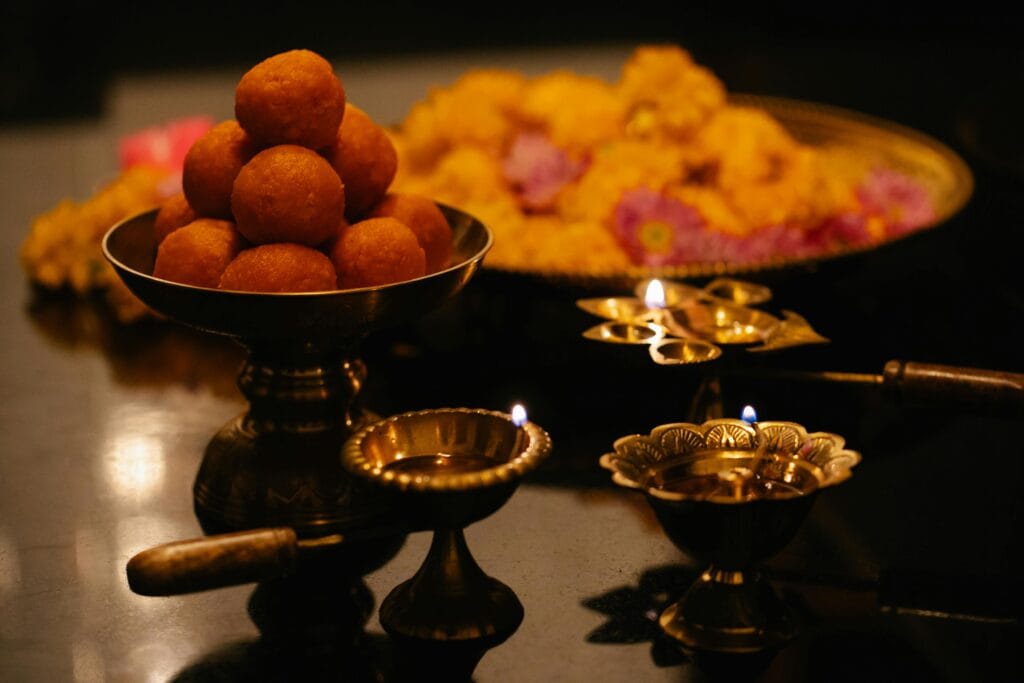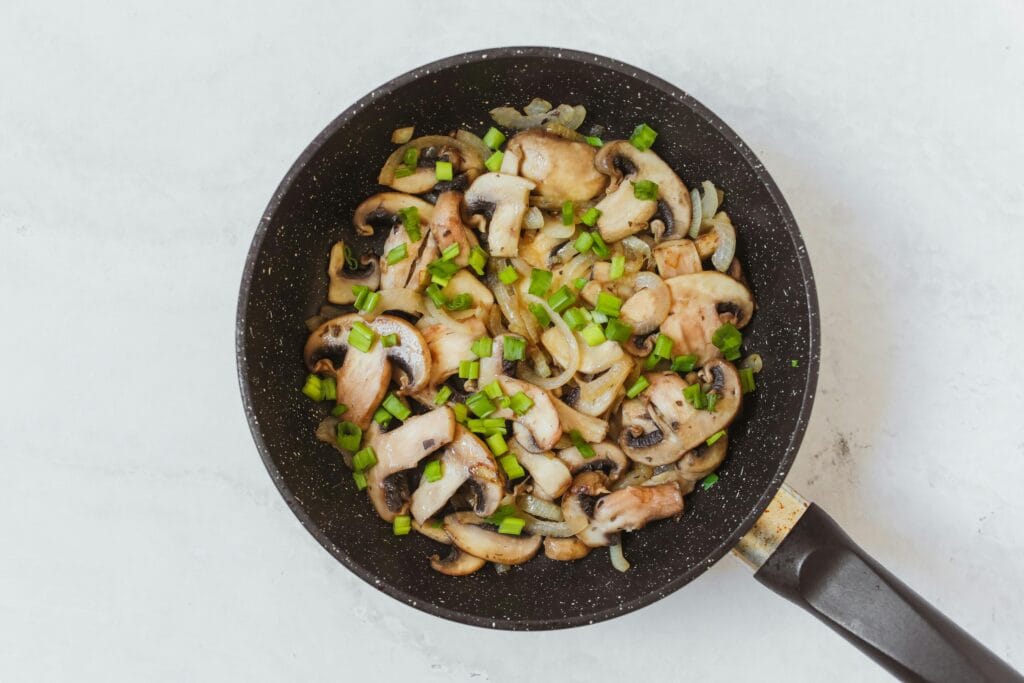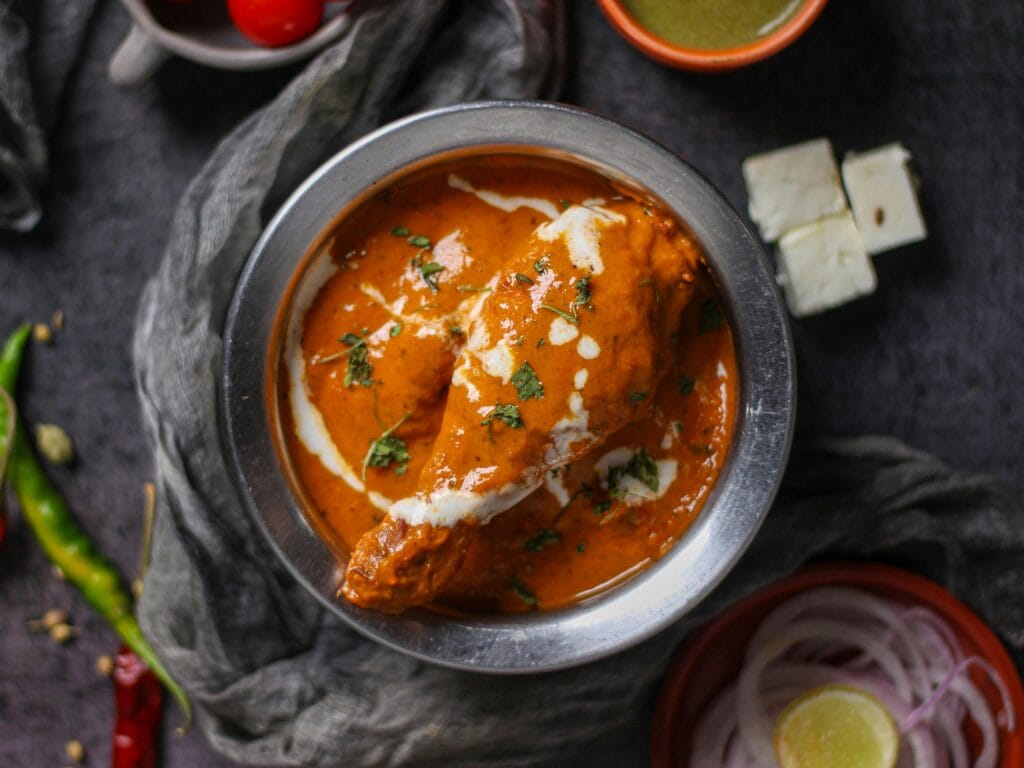Introduction: Food as a Path to the Divine
In Indian culture, food has always been far more than physical nourishment. It is deeply rooted in spiritual tradition, shaping the way people eat, cook, share, and offer meals. From Vedic rituals and temple offerings to yogic diets and mindful eating, food is seen as a powerful medium to purify the body, elevate the mind, and awaken the soul.
Whether it’s the simple act of offering prasadam after a ritual, fasting during festivals, or preparing Satvik meals for spiritual balance, Indian food culture reflects a unique relationship between the material and the divine.
This blog delves into how Indian food connects with spirituality—across history, scripture, rituals, Ayurveda, and daily practice.
1. Vedic Origins: Annam Brahma — “Food Is Divine”
The earliest expressions of the sacred nature of food can be found in the Vedas, the foundational scriptures of Indian philosophy. The Taittiriya Upanishad declares:
“Annam Brahma” — Food is God.
In Vedic society, food was never taken for granted. It was seen as a gift from nature and divine forces, to be consumed with reverence. Before every meal, a short prayer of gratitude (Brahmarpanam) was offered, acknowledging the role of the sun, rain, soil, animals, and farmers in bringing food to the plate.
Food as Yajna (Sacrifice)
In Vedic rituals (yajnas), offerings of milk, grains, ghee, and fruits were placed into sacred fire (Agni) as acts of devotion. These offerings were not symbolic—they were real food, shared between gods and humans, forming a cosmic cycle of give and take.
Thus, even consumption was an act of spiritual responsibility, tying the eater to the natural and divine world.
2. The Philosophy of Food: The Three Gunas
One of the most fascinating spiritual classifications of food comes from the Bhagavad Gita, where all foods are categorized based on the three gunas (qualities of nature):
1. Satvik Food – Pure and Harmonious
Fresh fruits, vegetables, nuts, seeds, grains, milk, and mildly spiced foods. They promote clarity, calmness, compassion, and spiritual awareness. Yogis, monks, and spiritual seekers traditionally follow a Satvik diet.
2. Rajasic Food – Stimulating and Passionate
Spicy, salty, fried, fermented, and rich foods. These stimulate the body and mind, increasing restlessness and desire. Rajasic foods are considered suitable for those engaged in active worldly life.
3. Tamasic Food – Dull and Impure
Stale, overcooked, preserved, processed, or reheated foods. These are believed to cause lethargy, confusion, and spiritual stagnation.
By following a Satvik diet, individuals align their physical and mental energy with spiritual upliftment, keeping the body light and the mind clear.
3. Ayurveda: Healing the Spirit Through Food
Ayurveda, the traditional Indian system of medicine, treats food as both nourishment and medicine. The Ayurvedic belief is simple:
“You are what you eat — not just physically, but mentally and spiritually.”
In Ayurveda, food is customized according to one’s dosha (body constitution): Vata, Pitta, or Kapha. But it goes beyond health—it integrates energy, emotion, and ethics into eating.
-
Food should be cooked in a peaceful state of mind.
-
Meals should be eaten slowly and mindfully.
-
Leftovers and stale food reduce vitality (prana).
-
Gratitude and silence while eating improve digestion and awareness.
The Ayurvedic kitchen becomes a spiritual space—one that heals not just the body but elevates consciousness.
4. Cooking as Spiritual Practice
In Indian households, cooking is often performed with devotion and ritualistic purity, especially in spiritual or religious families.
Traditional practices include:
-
Bathing and wearing clean clothes before cooking.
-
Avoiding anger, loud speech, or negative thoughts in the kitchen.
-
Chanting mantras while preparing meals.
-
Offering the first portion to deities, animals, or nature.
The mood of the cook is believed to enter the food. Meals cooked with love, compassion, and peace nourish the soul of the eater. This aligns with karma yoga—the idea of performing action (like cooking) with devotion and without attachment to the result.
In spiritual centers like ISKCON temples, meals are prepared and served as a form of devotion (seva), reinforcing the belief that food is a pathway to divine service.
5. Fasting: Cleansing the Body and Spirit
Fasting, or Upvaas, is a common spiritual discipline across Indian religions—Hinduism, Jainism, Buddhism, and even Indian Islam.
While modern fasting is often seen as a health trend, in Indian tradition it serves spiritual goals:
-
Detachment from bodily desires.
-
Purification of thoughts and actions.
-
Increased focus on prayer, meditation, and introspection.
-
A symbolic offering of one’s hunger and willpower to the divine.
Common fasting days include:
-
Ekadashi (twice a month): Devotees of Lord Vishnu avoid grains and beans.
-
Navratri: A 9-day festival dedicated to Goddess Durga, where people consume only light Satvik food.
-
Mahashivratri: A full-day fast and night vigil devoted to Lord Shiva.
Even during fasts, allowed foods like fruits, milk, and sabudana (tapioca) are chosen for their purity and subtle energy.
6. Temple Offerings and Prasadam
One of the most beautiful expressions of food and spirituality in India is Prasadam—food first offered to a deity, then distributed to devotees.
In temples across India:
-
Elaborate meals are cooked for deities as a sign of love and surrender.
-
These meals are offered during special times (like noon aarti or festivals).
-
After being “touched” by the divine presence, the food is considered sanctified.
Examples:
-
Tirupati Laddu in Andhra Pradesh.
-
Mahaprasad at Jagannath Temple in Odisha (cooked in clay pots over wood fire).
-
Pongal offered to Sun God during the harvest festival in Tamil Nadu.
-
Modaks offered to Lord Ganesha.
Eating prasadam is not just a ritual—it’s a blessing, meant to purify the soul and connect one directly to divine energy.
7. Yogic Diet and Mindful Eating
Yoga, as a spiritual path, emphasizes conscious living, and food plays a critical role in that process.
In ashrams or yoga retreats, meals are:
-
Prepared without onion, garlic, caffeine, or fermented items.
-
Cooked and served in silence or with devotional chanting.
-
Eaten while sitting on the floor, slowly and without distraction.
-
Taken only when hungry and stopped when moderately full.
This practice of mindful eating brings awareness to the present moment and transforms eating into a meditative act.
Even the way food is served—on banana leaves, in metal thalis, or with bare hands—reflects connection to earth, simplicity, and gratitude.
8. Interfaith Spiritual Food Traditions
While Hinduism has a rich food-spirituality culture, other Indian religions also revere food in deeply spiritual ways.
Sikhism: Langar – The Kitchen of Equality
Every Gurudwara serves free food to people of all backgrounds. The act of cooking, serving, and eating together reflects seva (selfless service), humility, and unity.
Jainism: Ahimsa (Non-violence) in Diet
Jains follow an extremely pure diet—strictly vegetarian, avoiding even root vegetables to prevent harming insects and micro-organisms. It’s a spiritual discipline aligned with non-violence and compassion.
Buddhism: Mindful Consumption
In many Buddhist traditions, monks eat simple meals in silence, with gratitude for the interconnectedness of all beings that contributed to that meal.
Islam: Iftar and Charity
During Ramadan, the breaking of the fast (iftar) is an act of devotion, gratitude, and generosity—shared with family, community, and the poor.
9. Everyday Spiritual Rituals Around Food
Even outside formal religion, daily life in Indian homes includes small spiritual practices around food:
-
Offering food to a deity or home altar before eating.
-
Feeding animals, cows, or birds before one’s own meal.
-
Eating in silence or after chanting a short prayer.
-
Avoiding wastage, sharing with guests, and cleaning utensils mindfully.
These habits foster a life of awareness, compassion, and connection—values central to all spiritual paths.
Conclusion: Nourishing the Body, Awakening the Soul
In Indian tradition, food is sacred—from seed to plate. It carries the energy of the Earth, the warmth of the sun, and the consciousness of the cook. More than fuel for the body, it is medicine for the mind and a ladder to the divine.
By treating food as spiritual practice—cooked with devotion, offered with love, consumed with awareness—we reconnect with nature, our ancestors, and the higher self.
So the next time you eat a bowl of lentils or sip on a cup of chai, pause and remember: in Indian culture, every bite can be a prayer—and every meal a moment of divine grace.





